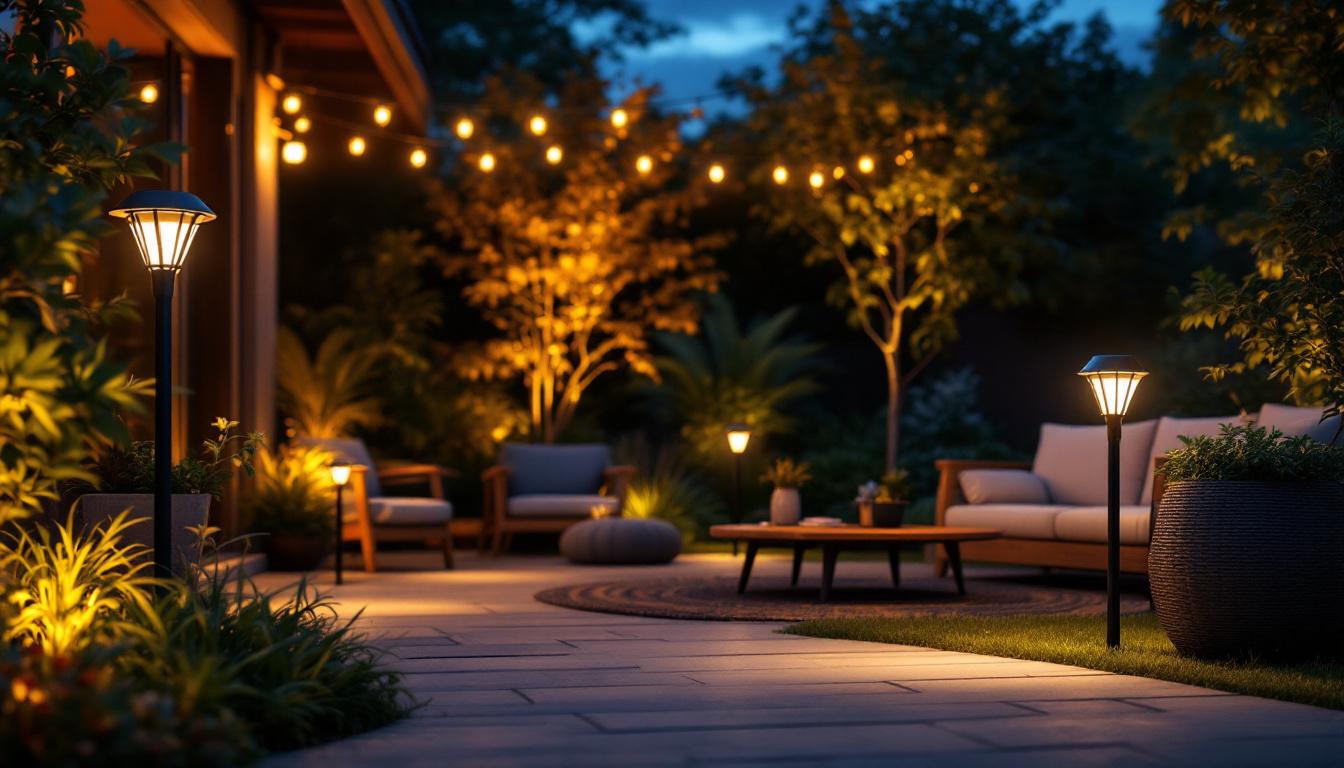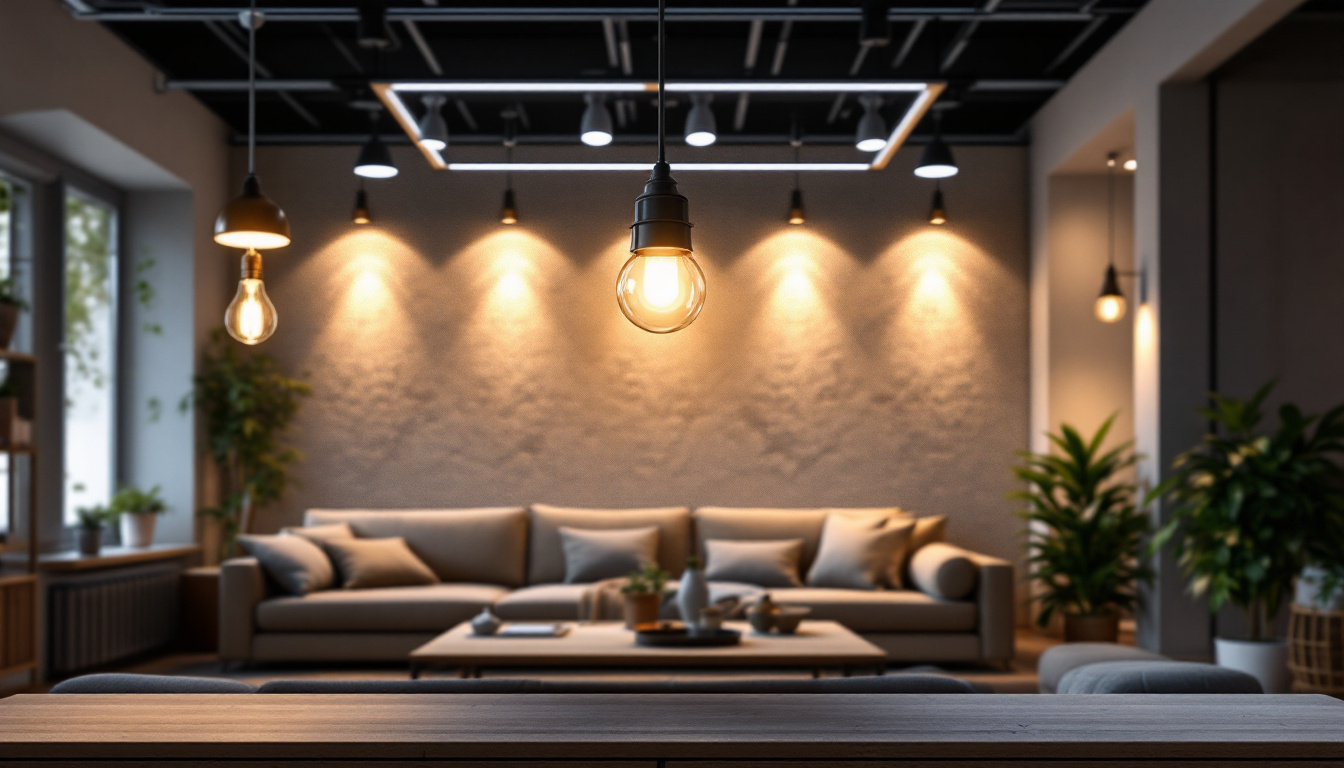
In recent years, the lighting industry has witnessed a significant shift towards energy-efficient solutions, with LED lights leading the charge. For lighting contractors, understanding the nuances of cheap LED lights is crucial not only for enhancing their service offerings but also for ensuring customer satisfaction. This article delves into the essential aspects of cheap LED lights that every lighting contractor should be aware of.
LED, or Light Emitting Diode, technology has revolutionized the way we illuminate spaces. Unlike traditional incandescent bulbs, which emit light through a filament, LEDs produce light through a semiconductor process, making them more efficient and longer-lasting.
At the core of LED technology is the principle of electroluminescence. When an electric current passes through a semiconductor material, it excites the electrons, causing them to emit photons, or light particles. This process is highly efficient, resulting in less energy wasted as heat compared to traditional lighting solutions. The semiconductor materials used in LEDs can vary, with common choices including gallium arsenide and gallium phosphide, each contributing to the unique properties of the emitted light.
Cheap LED lights offer numerous advantages that make them an attractive option for both contractors and consumers. Firstly, they consume significantly less energy, which translates to lower electricity bills. Secondly, their longevity—often lasting up to 25,000 hours or more—reduces the need for frequent replacements, thereby saving on maintenance costs. This extended lifespan is not only beneficial for individual users but also contributes to reduced waste, making LEDs an environmentally friendly lighting choice.
Moreover, LEDs are available in a variety of colors and intensities, allowing for greater flexibility in design and application. This versatility makes them suitable for a wide range of settings, from residential to commercial and industrial environments. In addition to their aesthetic appeal, many LED lights are also dimmable, providing users with the ability to adjust brightness levels according to their specific needs. This feature enhances comfort and can even contribute to energy savings, as lower brightness settings consume less power.
Furthermore, the durability of LED lights is noteworthy; they are resistant to shock, vibrations, and extreme temperatures, making them ideal for outdoor use and in challenging environments. Unlike traditional bulbs that can break easily, LEDs are solid-state lights, which means they are less prone to damage. This robustness not only extends their usability but also enhances safety, particularly in settings where fragile lighting might pose a risk. As technology continues to advance, we can expect even more innovations in LED lighting, such as smart features that integrate with home automation systems, further enhancing their functionality and appeal.
While cheap LED lights may seem like a bargain upfront, it is essential to consider the total cost of ownership. This includes not only the initial purchase price but also factors like energy consumption, maintenance, and lifespan.
The initial cost of cheap LED lights can be lower than that of high-quality options, but this might come at the expense of performance and durability. Lighting contractors should educate their clients on the importance of investing in quality products that may have a higher upfront cost but will yield greater savings in the long run.
When calculating long-term savings, it’s crucial to factor in energy efficiency. High-quality LEDs consume less power, leading to reduced electricity bills over time. Additionally, the longer lifespan of quality LEDs means fewer replacements, which can significantly lower maintenance costs.
Not all cheap LED lights are created equal. When selecting products, contractors should look for certifications such as Energy Star or UL listing, which indicate that the products meet specific performance and safety standards. These certifications can help ensure that the cheap LED lights chosen are reliable and efficient.
Furthermore, it’s advisable to research the manufacturer’s reputation and warranty offerings. A reputable manufacturer is more likely to produce high-quality products that stand the test of time, providing peace of mind for both contractors and their clients.
The versatility of cheap LED lights makes them suitable for various applications. Understanding these applications can help contractors make informed decisions when recommending lighting solutions to clients.
In residential settings, cheap LED lights can be used for general lighting, accent lighting, and task lighting. They are ideal for fixtures such as ceiling lights, wall sconces, and under-cabinet lighting in kitchens. Their ability to provide warm or cool light tones allows homeowners to create the desired ambiance in their living spaces.
For commercial and industrial applications, cheap LED lights can significantly enhance energy efficiency. They are commonly used in office buildings, warehouses, and retail spaces. The bright, focused light provided by LEDs can improve visibility and safety, making them an excellent choice for work environments.
Moreover, with the growing trend of smart lighting solutions, many cheap LED lights are now compatible with smart home systems, allowing for remote control and automation. This feature is particularly appealing to businesses looking to optimize their energy usage.
Proper installation is crucial to maximizing the benefits of cheap LED lights. Lighting contractors should follow best practices to ensure that the lights perform optimally and meet client expectations.
When installing cheap LED lights, it’s essential to select fixtures that are compatible with the specific type of LED being used. Some LEDs are designed for specific applications, such as recessed lighting or outdoor use, and choosing the right fixture can enhance performance and aesthetics.
Additionally, contractors should consider the placement of the lights. Proper positioning can help achieve the desired lighting effect, whether it’s for highlighting artwork, providing general illumination, or creating a cozy atmosphere.
Many cheap LED lights come with dimming capabilities, which can add versatility to lighting designs. However, not all LED lights are compatible with standard dimmer switches. Contractors should ensure that the dimmers used are specifically designed for LED technology to avoid flickering or reduced lifespan.
Educating clients about the benefits of dimmable LED lights can also enhance their overall satisfaction, as it allows them to adjust the lighting according to their needs and preferences.
One of the most compelling reasons for the shift towards LED lighting is its positive impact on the environment. Lighting contractors should be aware of these benefits when discussing options with clients.
Cheap LED lights consume significantly less energy compared to traditional incandescent or fluorescent bulbs. This energy efficiency translates to a lower carbon footprint, making LEDs an environmentally friendly choice. By promoting the use of LED lights, contractors can contribute to sustainability efforts and help clients reduce their environmental impact.
Unlike traditional fluorescent lights, which contain hazardous materials like mercury, most LED lights are free from toxic substances. This makes them safer for both consumers and the environment. Furthermore, many LED lights are recyclable, which can further reduce waste and promote sustainable practices in the lighting industry.
Despite the growing popularity of LED technology, several misconceptions persist regarding cheap LED lights. Addressing these misconceptions can help contractors provide accurate information to their clients.
One common misconception is that cheap LED lights are not as bright as traditional bulbs. In reality, LED technology allows for high lumen output, providing bright illumination suitable for various applications. Additionally, advancements in LED technology have improved color rendering, ensuring that colors appear vibrant and true to life.
Another myth is that LED lights generate excessive heat. In fact, LEDs are designed to be more efficient, converting a higher percentage of energy into light rather than heat. This characteristic not only enhances their longevity but also makes them safer to use in various settings.
The LED lighting industry continues to evolve, with new trends emerging that can impact contractors’ offerings. Staying informed about these trends is essential for remaining competitive in the market.
Smart lighting technology is on the rise, allowing users to control their lighting remotely through smartphones or voice-activated devices. Cheap LED lights are increasingly being designed to integrate with smart home systems, providing added convenience and energy management capabilities.
Contractors should familiarize themselves with these smart solutions to offer clients innovative options that enhance their lighting experience.
Another trend gaining traction is human-centric lighting, which focuses on enhancing well-being through lighting design. This approach considers factors such as color temperature and intensity to align with natural circadian rhythms. By offering cheap LED lights that support human-centric design, contractors can cater to clients looking to improve their health and productivity through lighting.
Cheap LED lights present a myriad of opportunities for lighting contractors. By understanding the technology, cost considerations, applications, and installation best practices, contractors can provide valuable insights to their clients. Additionally, addressing common misconceptions and staying informed about future trends can position contractors as knowledgeable experts in the field.
Ultimately, the shift towards LED lighting is not just a trend; it’s a movement towards sustainability, energy efficiency, and improved quality of life. By embracing this technology and educating clients about its benefits, lighting contractors can play a pivotal role in shaping the future of illumination.
Ready to elevate your lighting game? At LumenWholesale, we specialize in providing lighting contractors with superior, spec-grade LED solutions that don’t break the bank. Say goodbye to local distributor markups and hello to our extensive selection of high-quality, energy-efficient lighting products at wholesale prices. With the added benefits of free shipping and bulk buying convenience, you can trust that you’re getting the best value for your investment. Don’t compromise on quality or cost—visit LumenWholesale today and discover the perfect blend of quality, affordability, and convenience for all your lighting needs.

Illuminate your outdoor spaces efficiently with our comprehensive guide on the best commercial solar lights.

Discover the benefits of integrating switch and outlet combos into your lighting projects.

Discover expert insights and practical tips for lighting contractors in our comprehensive guide to exterior lights commercial projects.

Explore the significance of 17-watt lighting in modern installations.